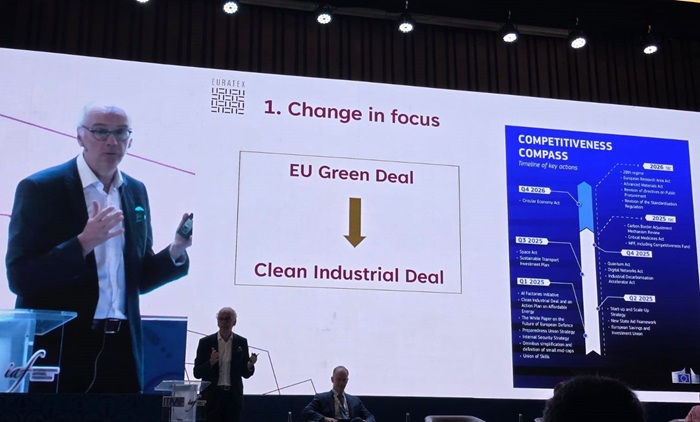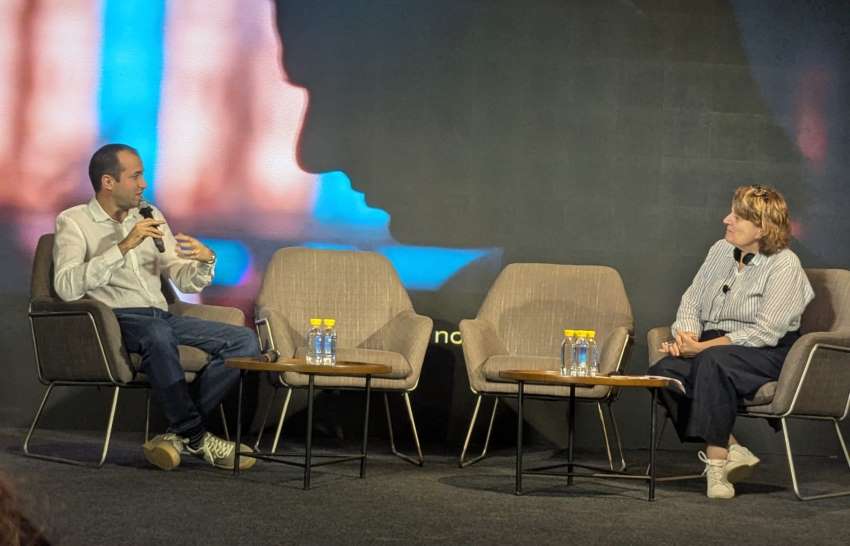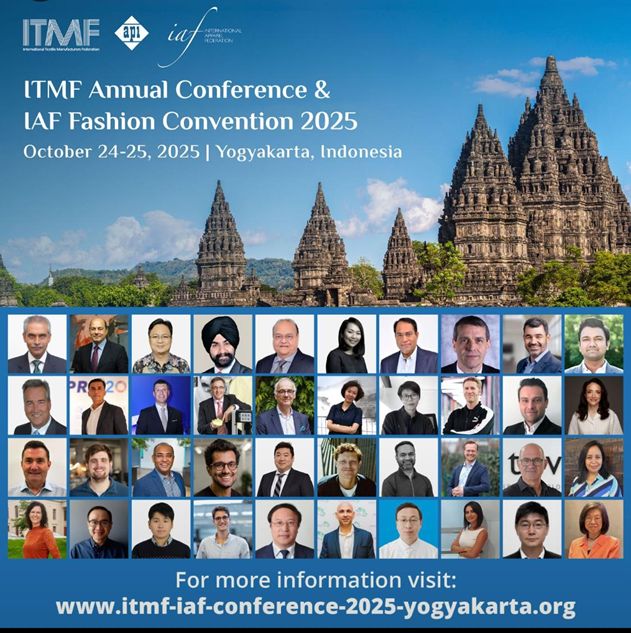FW
Bangladesh is monitoring the activities of Accord and Alliance. Garment makers say, Accord in particular has got involved in labor-management issues in some factories and is engaged in activities that are supposed to be beyond its purview. Accord is trying to induce workers of some factories to communicate with labor leaders and participate in trade unions.
The government will monitor all activities of the two global groups. There are allegations that Accord and Alliance are exercising extra sovereign power and their activities have now become a noose for the apparel industry. Accord and Alliance have clearly defined areas of jurisdiction that do not overlap.
The Alliance for Bangladesh Worker Safety was founded by a group of North American apparel companies and retailers and brands who have joined together to develop and launch the Bangladesh Worker Safety Initiative, a binding five-year undertaking. Collectively, these Alliance members represent the overwhelming majority of North American importers of readymade garments from Bangladesh, produced in more than 580 factories.
Accord, led mostly by European buyers, was signed on May 15, 2013. It is a five-year independent, legally binding agreement between global brands and retailers and trade unions to build a safe and healthy Bangladeshi readymade garment industry.
A few international fashion brands sourcing from Pakistan, such as H&M, Li & Fung, Gap India and C&A are set to improve labour and environmental practices in the country’s textile and clothing sector. The Buyers’ Forum for Textile sector, was set up at the end of 2014 by the Netherlands Government, the International Finance Corporation (IFC) and the International Labour Organization (ILO). Representatives from 19 international brands took part in its third meeting last month and now they are sharing good practices on labour, environmental and social compliance with Pakistan. This will help Pakistan’s textile and clothing sector to remain competitive and attractive to international buyers.
Apart from this, participants discussed the findings of a project by the Dutch NGO, the Sustainable Trade Initiative (IDH) to map compliance and existing good practices in the textile sector. They discovered that the smaller local manufacturers in the textile industry, had no compliance monitoring mechanisms in place.
But now, buyers have agreed to set up a committee that will have an action plan in place to handle key issues in the sector and also strengthen the labour inspection regime and issues of contractual employment. Moreover, they will support smaller manufacturers to improve compliance on par with international standards.
On an immediate basis, a scheme was put in place to reinvigorate labour inspection system in Pakistan. This scheme will have the Dutch government and the ILO, who will train labour inspectors and introduce mechanisms to improve worker welfare.
Employment levels in the clothing, textile, footwear and leather (CTFL) sectors in South Africa have increased. Following a few years of job losses, the CTFL industry in South Africa had started to witness stability in the last year. The textile industry is making a comeback after languishing for a few years.
There has been a year on year increase of 1.5 per cent in the number of employees across the CTFL industry from December 2014 to March 2015. The highest quarterly increase was in the leather sector, which went up 3.9 per cent. Next was the textile sector, which rose by 2.9 per cent, followed by the clothing sector which increased by 1.5 per cent. The footwear sector registered a decline in number of employed by 3.8 per cent over the last quarter.
In the 12-month period, the highest increase in the number of employees was in the leather sector, which saw employees increase by 4.5 per cent. In second place was the footwear sector where employment rose by 3.3 per cent, followed by the textile sector which has 1.5 per cent more employees. The clothing sector followed last with an increase of 0.8 per cent in its employees.
The Alliance for Bangladesh Worker Safety, for the first time has collaborated with the International Finance Corporation (IFC) to aid suppliers with costs for factory repairs. Almost $50 million will be provided by IFC as per the new deal. This will be evenly distributed across five banks in the country through affordable loans, which will help garment factory owners who wish to make safety improvements. It can be challenging at times to procure finance and it can be cost-prohibitive. High interest rates and unfeasible repayment periods also prove to be a hazard.
the Bangladesh RMG SEF Safety Remediation Financing Program, which is named thus by the Alliance-IFC credit facility, will offer affordable interest rates, which can be repaid over a three to five year period. The Alliance represents 26 global brands and retailers is to donate $250,000 to fund the facility’s operation.
The Alliance will also offer on-the-ground resources and a team of qualified inspectors to the factories. This will ensure that the factory owners complete their corrective action plans, which include specific fire, structural and electrical repairs. These corrective measures will make the facilities on par with international standards as timely progress on them is necessary to maintain favourable loan terms.
The Southern India Mills' Association (SIMA) has urged the minister for textile Santhosh Kumar Gangwar to review the e-auction policy of Cotton Corporation of India (CCI). SIMA suggests that CCI should offer about 50,000 bales, in flexible lot sizes and in multiple of 100 bales, in each centre and each variety of cotton, to support the small industry. SIMA has also suggested government give priority to SMEs and reduce the difference in the cost of cotton procured by SMEs and large industry players.
The spinning mills in South India, especially, Tamil Nadu were facing a crisis due to several factors such as glut in the domestic market, continuous fall in yarn exports since the past 13 months, etc. Other states have announced attractive industrial polices by various states enabling industries to have cost advantage to the tune of Rs 20 per kg of yarn, etc., which is not the case in Tamil Nadu. Besides, there has been undue delay in disbursing TUF subsidies.
The association stated that investments worth Rs 70,000 crore were under severe stress so, all textile mills, particularly spinning mills were maintaining a stock inventory of up to 30 days. In this situation, CCI’s e-auction policy was affecting the small and medium spinning mills seriously. Also, the association has been receiving complaints from small and medium size mills and they were finding it difficult to procure cotton from CCI.
T Rajkumar, Chairman, SIMA, has urged the minister to instruct CCI to maintain adequate stocks till the onset of new season. This would help maintain stability in cotton prices and also enable the SMEs to get continuous supply of cotton. Also, these SMEs have no access to imported cotton, further putting them at a disadvantage.
Pakistan's textile policy for 2015-19 has provisions for special duty drawback rates, duty exemption on plants and machinery, subsidy on long term loans and development subsidies. The country’s production chain has inherent potential for value addition at each stage of processing, from cotton to ginning, spinning, fabric, dyeing and finishing, made -ups and garments. Barring seasonal and cyclical fluctuations, textile products have maintained an average share of about 54 per cent in national exports.
The textile sector contributes nearly one-fourth of industrial value added, provides employment to about 40 per cent industrial labor and consumes about 40 per cent of banking credit to the manufacturing sector. However, the sector has remained stagnant over the last decade.
Resistance to grading and standardisation of cotton bales by ginners and spinners alike has consistently lowered the value of Pakistani cotton by around 10 cents per pound in the international market. The value added garment sector has shown marginal growth due to its limited product range, low use of manmade fibers and the inability of manufacturing units to restructure in order to meet changing international requirements. Cotton production has remained stagnant at about 13 million bales per annum.
With 600 members already onboard, the Better Cotton Initiative a (BCI) has apparently reached a milestone. The organisation, which works with cotton farmers to promote fair working conditions and aims for Better Cotton to become a mainstream commodity, describes this figure as a ‘tipping point’.
BCI believes that this figure will help it build a more transparent and trustworthy cotton supply chain. It aims to hit the 700 mark in membership by the end of this year. The organsation states that its recent members include Thomas Pink, HEMA, G-Star Raw, and Cone Denim—the first US based fabric mill to join BCI, supplying member Levi Strauss with Better Cotton.
After this phenomenal growth in membership, BCI is confident of achieving its target of 700 members by this year. This is the fifth consecutive year when the organisation has seen a rise in membership, with an increase of 50 per cent or more of new members. An average of 25 new companies per month become members of BCI each year.
BCI further states, 44 brand and retail members have played a key role in this growth so far. They have invested in farmer capacity consequently building and driving supplier engagement. It also mentioned that these members remain committed to the uptake of Better Cotton and its aim of building a transparent and trustworthy chain of cotton supply.
Ruchira Joshi, Programme Director stated that the BCI membership exhibits the power of collaboration. She also feels that their solidarity will help BCI’s goal of 30 per cent of cotton production as Better Cotton by 2020.
India will observe August 7 as National Handloom Day. A national level function will be held to mark the first National Handloom Day. The aim is to boost the morale of handloom weavers of the country.
In order to promote good quality genuine handloom products in a campaign mode, the India Handloom brand has been prepared to provide quality assurance to domestic as well as international consumers. Sant Kabir awards and national awards will be presented to distinguished handloom workers for years 2012, 2013 and 2014. An exhibition showcasing master creations of the awardees will also be organised.
The Swadeshi movement was launched in August 7, 1905, in order to promote genuine, global quality products in international markets. The movement involved boycotting British products and the revival of domestic products and production processes. India has a heritage of handloom weaving that is unique and the largest anywhere in the world. But that is dying because of lack of support and policies that are killing the handloom industry.
Handloom weavers are known for their unique designs on saris, dress material, bed sheets and furnishings. These items are meant to be produced only by weavers under the Handlooms Reservation Act. However that has not safeguarded the brand against imitation by power looms.
Spinning mills in Tamil Nadu are upgrading their units to produce compact yarn. One reason is that a large number of textile mills in the region are opting for faster air jet looms. Air jet looms require compact yarn that have less hairiness, better strength and can be used to make higher quality fabric.
Spinners are opting to upgrade their units to make compact yarn through retrofits. About 40 per cent of the upgradation to compact yarn is happening through retrofits. Mills are opting for retrofits as the costs are lower. They are installing compact yarn spinning systems in their greenfield projects as well as for expansion.
While retrofitting costs only around Rs 1,350 per spindle, installing a new compact yarn unit costs about Rs 6,000 per spindle. This could be one of the reasons compact yarn spinning systems account for less than 10 per cent of the total installed spinning capacity in the country. Branded items are mostly made using compact yarn. Even hosiery units are demanding compact yarn now. Textile mills in Tamil Nadu have added nearly a million spindles that are capable of producing compact yarn in the last seven to eight years. The demand for compact yarns is expected to grow in future.
The Garment Manufacturers Association in Cambodia (GMAC) plans to form a Cambodia Garment Training Institute. It is seeking technical advisors to assist in creating the institute. French development body, Agence Française de Développement (AFD), loaned GMAC approximately $3 million and the association has since begun advertising for advisors to support and formulate curricula for students who wish to enter the garment business.
Some courses will be long-term and offered to 240 young people with no garment background and short-term courses will be offered to 1,600 people who are already a part of the garment industry. Both these course will be offered every year. About 700,000 people are employed in the country’s garment sector, but the new institute aims to replace more than 8,000 skilled expatriate-held positions with competent local personnel. This would help increase the local industry’s sustainability.
GMAC, with its institute hopes to fill the current gap of 4,000 skilled workers by training enough people per year.












